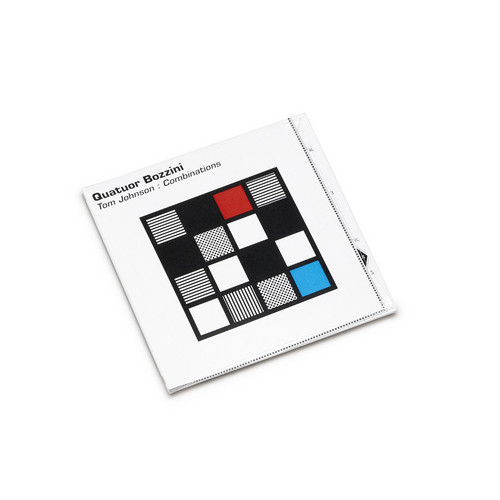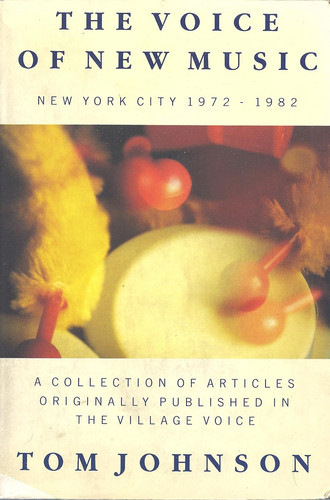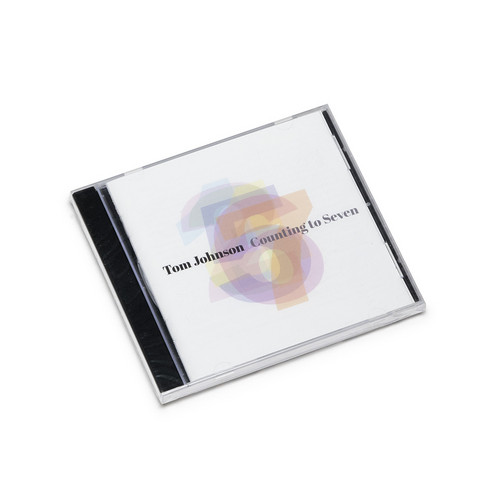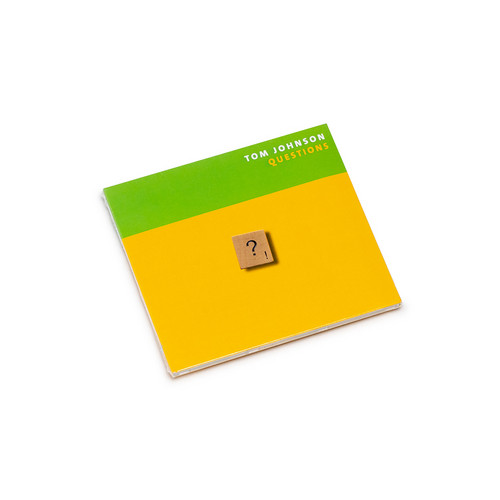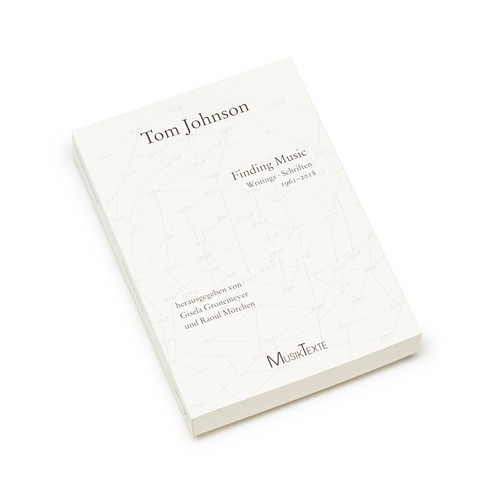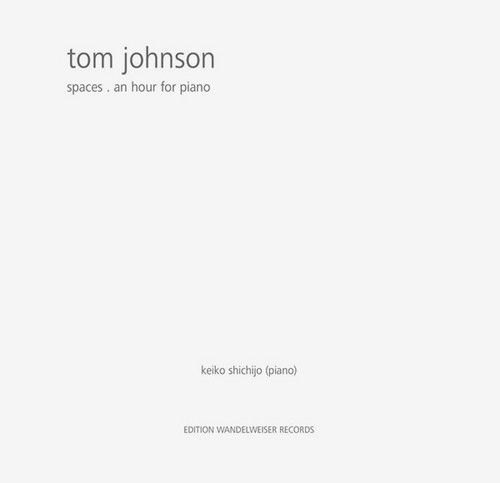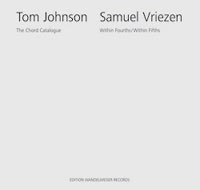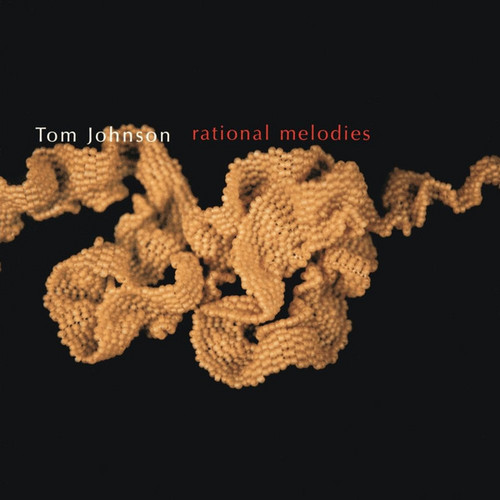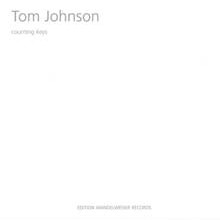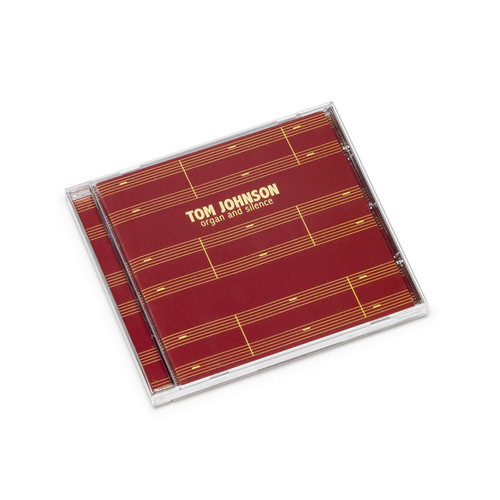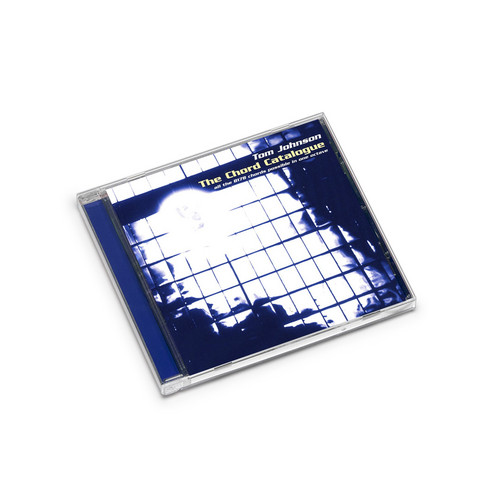Tom Johnson
An Hour for Piano
Artist book concept and design by Luigi Castiglioni. Comes with a 10-inch vinyl recording of Tom Johnson’s voice reading the Program Notes + an autographed facsimile of Tom Johnson’s composition Maloma dedicated to Morton Feldman that inspired the pr…
An Hour For Piano
**Original 1979 copies, still sealed and log time stored (copies may have minimal wear on covers)** A trance music piece made up of repeating 4/4 cells in which an absolutely steady eighth-note motion predominates. Often several cells are going on si…
Tom Johnson : Combinations
Tom Johnson uses numbers as base material, turning formulas, combinations and other mathematic phenomena into music. And somehow, this music becomes poetry, sometimes like a haiku, sometimes like a sonnet, sometimes descriptive and clear, often enigm…
The Voice of New Music: New York City, 1972-1982 - A Collection of Articles Originally Published in the Village Voice
An anthology of articles on the evolution of minimal music in New York in 1972-1982, which originally appeared in the Village Voice.
Counting to Seven
Tom Johnson (b. 1939) is a key figure in the contemporary music scene whose voice as a composer is instantly recognizable. A major champion of minimalism in the 1970s as a writer, he remains one of its most important adherents as a composer, although…
Questions
* 2021 Stock * Most music proceeds with great self-assurance, more like an answer than like a question, but these pieces raise questions. We hope you will not only listen to the music as the pairs go by, but we will also want to decide whether they a…
Finding Music
A general introduction to Tom Johnson’s music, as well as many articles written from 1961 until 2018, with texts both In English and German. "I can not say that I always manage to find my music. Sometimes it still seems necessary to compose it, parti…
Spaces . An Hour For Piano
Performed by Keiko Shichijo. Tom Johnson's An Hour for Piano was written in 1971. The piece began as a series of short, improvisatory sketches in 1967 when Johnson was accompanying a modern dance class at New York University. Johnson gradually expand…
Zaj Concert for Voices
edition of 100 copies. Beautiful publication by performance artist Esther Ferrer and composer Tom Johnson.Esther Ferrer, born in San Sebastián, Spain, has been noted for her work in performance art as a solo artist and as a member of the seminal ZAJ …
The chord catalogue / Within fourths/Within fifths
2013 release **
"The Chord Catalogue is sort of a sister to Music for 88. It is also an examination of pianistic possibilities done with a focus so tight that obscuring any intrinsic aesthetic qualities in the execution seems to be the intention. (Al…
Orgelpark color chart
A very special edition for this première of a new opus of the legendary minimalist composer Tom Johnson. 50' minutes of a unique piece for four organs, recorded live at Orgelpark, Amsterdam, The Netherlands. "“I have two good minimalist com…
Rational Melodies
I am particularly pleased, because the result is so different from the solo flute recording of Eberhard Blum and the solo clarinet recording of Roger Heaton. It is not just another interpretation, but a case where interpreters have added so much i…
Counting Keys
2009 release **
"In case you're surprised to find a Tom Johnson album on Wandelweiser – after all, I reckon there are more actual notes on Counting Keys than on the rest of the albums released on the über-redux label put together – it's worth remembe…
Organ and Silence
File under: minimalism, conceptual sound art, organ music. A music whose talking about, as the author writes in the disc notes, 'the importance of silence in music'. This work is conceived not 'for organ' but, really, for 'organ and silence', as th…
The chord catalogue
I like to think of The Chord Catalogue as a sort of natural phenomenon--something which has always been present in the ordinary musical scale, and which I simply observed, rather than invented. It is not so much a composition as simply a list. I hav…
Music for 88
Simplicity and clarity have always been among Tom Johnson's chief concerns as a composer. That concern led him to research number theory, particularly by Pascal, Fermat, and Euclid, and these sources suggested musical structures somewhat more complic…
Kientzy plays Johnson
In Kientzy Loops, the accompanying loop is a mix of six alto saxophones played in continuous blowing, while the principal lines are played on alto saxophone, except for the third section, played on baritone. The piece, premiered at the auditorium of …


